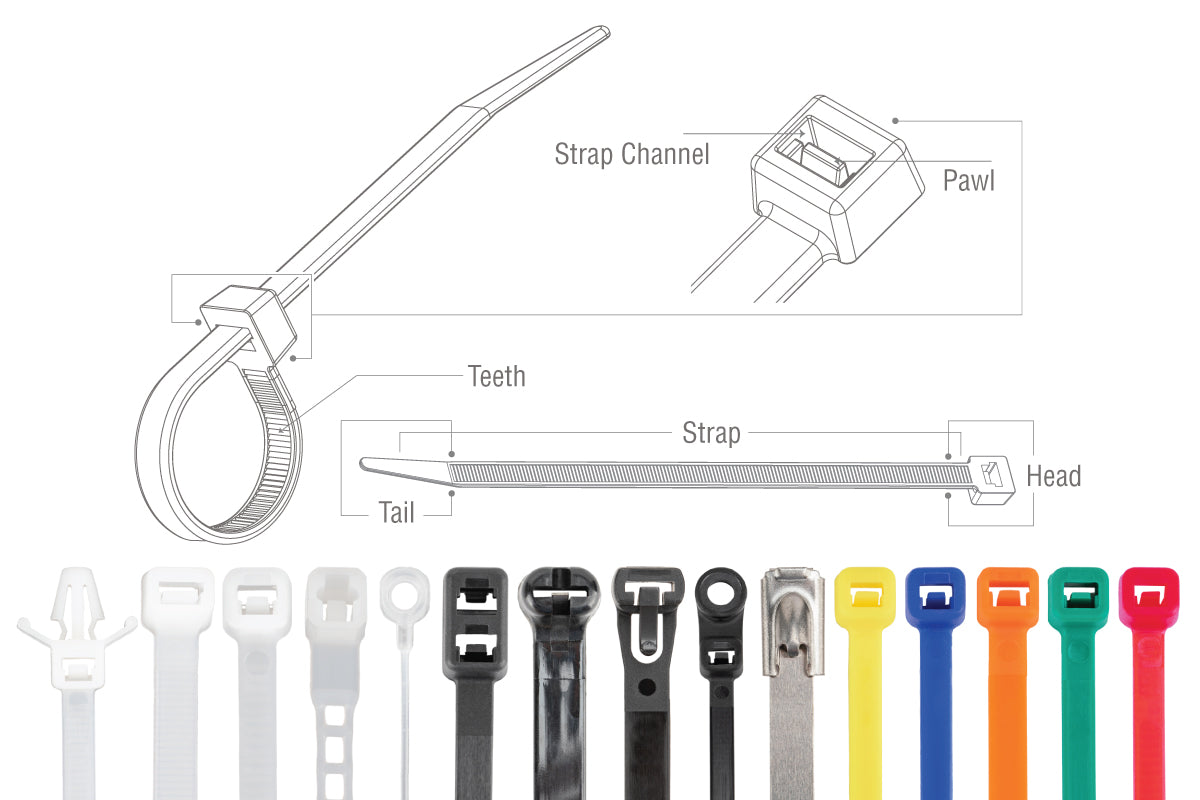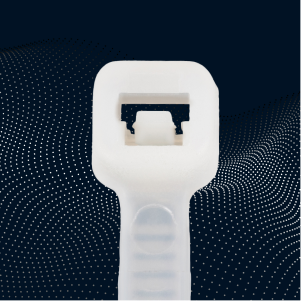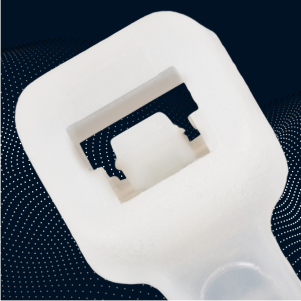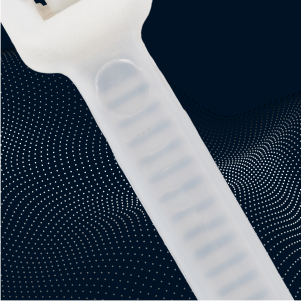
Cable Tie Anatomy
Knowing the different parts of a cable tie can help you find the most precise answers for your questions.

Head
The head is the wider, reinforced part of the cable tie that contains the mechanism for fastening and tightening the tie.

Pawl
A pawl is a small, pivotable piece of metal or plastic that is found in a cable tie or other fastening device. It is typically located in the head of the tie, and its function is to engage with the teeth of the tie's ratcheting mechanism in order to hold the tie securely in place.

Strap
The strap is the main body of the cable tie, which is made of a flexible, durable material such as plastic or nylon.

Teeth
Some cable ties also have small barbs or teeth along the length of the strap, which help to hold the tie in place and prevent it from slipping or sliding.

Tail
The tail is the narrower, pointed end of the cable tie that is inserted through the head and used to pull the tie tight.
DEFINITIONS
Common Cable Tie Terms
Tensile Strength
The tensile strength of a cable tie is a measure of the maximum force that the tie can withstand before breaking or failing. This is important because it determines the strength and reliability of the tie in different applications.
Width
The width of a cable tie refers to the width of the strap. Cable ties are available in a range of widths, from small sizes suitable for bundling small wires to large sizes for bundling larger cables or bundles.
Length
The length of a cable tie refers to the overall length of the strap, including the head and the tail. Cable ties are available in different lengths to accommodate different bundling needs.
Self-locking
Some cable ties have a self-locking mechanism, which allows the tie to be tightened and secured without the need for any additional tools or equipment.
Working or Operating Temperature Range
The working temperature range of a cable tie is the range of temperatures in which the tie is designed to operate. Some cable ties are designed for use in extreme temperature environments, while others are designed for use in more moderate conditions.
Flammability Rating
The flammability rating of a cable tie refers to the tie's resistance to catching fire. Some cable ties are more resistant to fire than others, which is important to consider in certain applications where the risk of fire is higher.
Coefficient of Friction
The coefficient of friction is a measure of the resistance of one material to slide against another. In the context of cable ties, the coefficient of friction refers to the ease with which the tie can be handled and manipulated. A lower coefficient of friction means that the tie is easier to handle, while a higher coefficient of friction means that it is more difficult to handle.
UL Listed or Certified
When a cable tie is UL listed or certified, it means that it has been tested and certified by Underwriters Laboratories (UL), an independent safety science company that evaluates products for safety and performance. UL has a range of testing and certification programs for a variety of products, including cable ties.
To be UL listed or certified, a cable tie must undergo a series of rigorous tests to ensure that it meets certain safety and performance standards. These tests may include evaluating the tie's strength and reliability, as well as its resistance to fire, chemicals, and other environmental factors.
